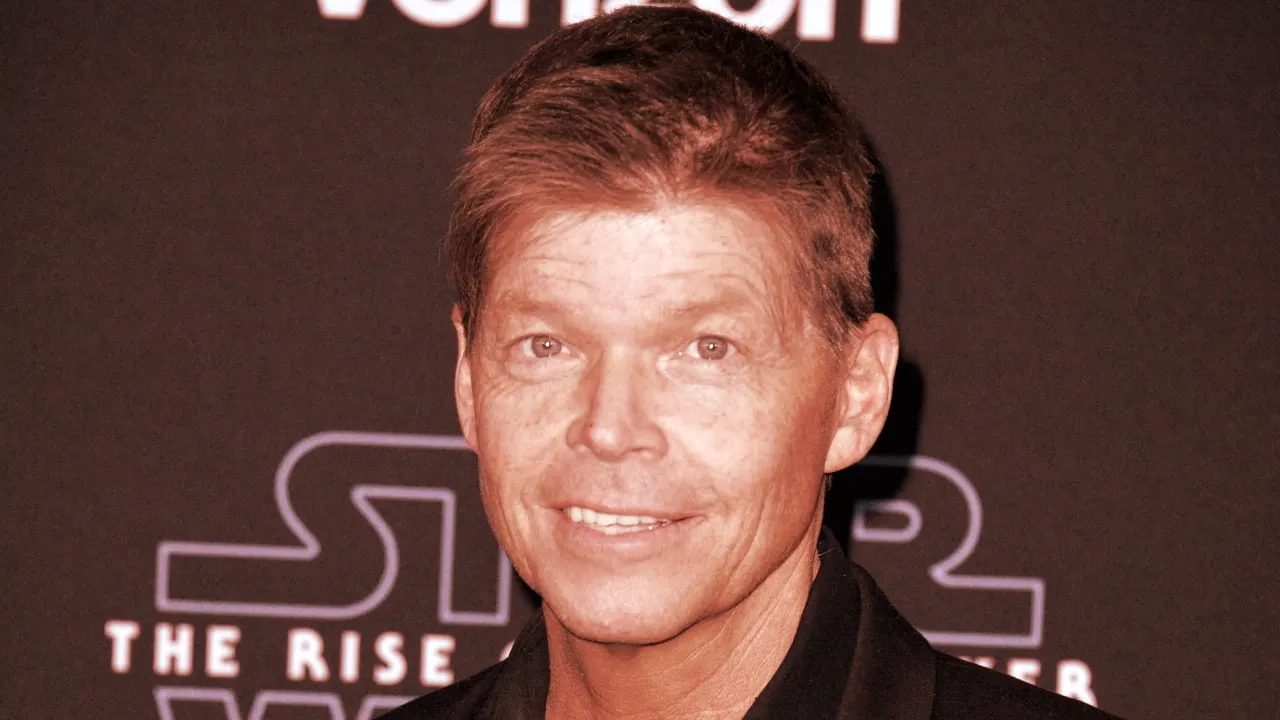In brief
- Longtime comic book creator Rob Liefeld has released Ethereum NFT artwork via MakersPlace.
- He discussed the benefits of—and controversy around—NFTs in an interview with Decrypt.
Comics creator Rob Liefeld—who co-created Marvel characters like Deadpool and Cable in the early 1990s and then left to co-found Image Comics—has long been controversial in the industry.
His rapid rise during that period, along with his distinctive art style and at times contentious comments over the years, have earned him passionate admirers and detractors alike. In that sense, Liefeld told Decrypt this week, he’s similar to NFTs right now: both loved and reviled.
“I have been controversial, for some reason, my entire career. I'm not sure why, but I can't do anything about it,” he said. “I'm like a walking NFT.”
It’s a familiar topic for Liefeld, who is one of the most prominent comic book creators exploring the expanding NFT space. In January, he launched a new comic book IP, called "The Defiants," through Ethereum NFT marketplace MakersPlace, and now he’s back on the same platform with a new drop of artwork based on his creator-owned comic IP, "Bloodstrike."
$99 Mystery Box from @robertliefeld - Closing in 3 hours! 🔥 Try your luck & claim a Bloodstrike digital NFT comic book w/ one of four randomly selected covers.
See it here 👇👇https://t.co/1R8sWR4tN1 pic.twitter.com/PIHyIKO5Xl
— MakersPlace (@makersplace) May 5, 2022
This year marks the 30th anniversary of Image Comics, which Liefeld co-founded alongside industry luminaries like Todd McFarlane (Spawn) and Jim Lee (WildC.A.T.S.). As a result, Liefeld has revived his Bloodstrike action team for a series of digital illustrations and remastered artwork from the original 1993 debut comic book.
Although he said the original artwork was missing and perhaps stolen, he worked from scans of a black-and-white variant version of Bloodstrike #1 from 1993 and digitally enhanced the pieces and had them recolored. The NFT drop also has a single-edition illustration up for auction.
Liefeld said that he didn’t make any major changes to the original work like director George Lucas did with the “Star Wars” movie re-releases in the 1990s. “I didn't really alter it—I didn't put a new scene in,” he said. “It’s not quite like that. But I gave it a fresh coat of paint.”
For Liefeld, the Bloodstrike drop—which runs through this afternoon—was an opportunity to revisit notable characters from his past in a new way while also marking Image’s milestone.
“Look, you're not going to get a 30th anniversary again, especially for a company that everyone told us wouldn't be in business for six months,” he explained. “The fact that Image Comics, Extreme Studios, Bloodstrike, and these characters continue to survive and thrive is exciting. So I'm celebrating it by putting them in the digital space.”
Comics and NFTs
An NFT is a blockchain-based token that proves ownership for an item, and is often used to represent things like digital artwork and profile pictures, sports and entertainment collectibles, and interactive video game items. The overall NFT market exploded to $25 billion worth of trading volume in 2021.
Liefeld isn’t alone in exploring the NFT space. Fellow comic artists like McFarlane and José Delbo have released NFTs, publishers Marvel and DC Comics have created collectibles based on their massive superhero properties, and Archie Comics recently revealed plans to use NFTs to create a virtual writers’ room to contribute to future comic books.
In fact, Liefeld said that Marvel’s own digital comic book cover drops via Veve inspired his Bloodstrike NFTs. Marvel contacted Liefeld to let him know that the cover of Deadpool’s first appearance (The New Mutants #98 from 1991) would be released via NFTs, and he thought the variant cover styles and approach were “cool.”
Liefeld first planned to dive into NFTs in early 2021, but held back, citing market conditions and environmental concerns. He later linked up with MakersPlace, which has a carbon offset initiative for drops to ostensibly counteract the environmental impact of minting on Ethereum, and launched his Defiants drop when the market was especially hot in January.
He said that NFTs have the potential to open up new markets for comic creators, including collectors who invest in NFT artwork but aren’t into traditional comic books. It’s also another digital option for ownership, during an era in which physical comic book distributors struggle to get issues into stores on time and in collector-friendly shape.
“I gotta be honest: as a creator, there's no negotiating with the printer. There's no worrying about the distributor,” he said of NFT comic books. “You just load it up. You put it there. It looks pretty. It's nice, it's fresh, and it’s digital.”
NFTs, however, remain controversial to many comic book and video game fans. Critics have called out NFTs over the environmental impact of certain blockchain networks (including Ethereum), while others consider them to be scammy and unnecessary—or blatant attempts at increased monetization by publishers and creators.
Something's brewing in the... weeds? Celebrate 4/20 with #THESECRETHISTORYOFTHEWARONWEED #BAYC #7073 @BoredApeYC @thebrianposehn @GerryDuggan @Koblish #apefollowape https://t.co/KvhL75mu3M pic.twitter.com/VMAPBNIRUJ
— Image Comics (@ImageComics) April 20, 2022
Just last month, in fact, Image Comics put the image of a valuable Bored Ape Yacht Club NFT on the cover of a comic book and received significant blowback on Twitter. Liefeld acknowledged that NFTs have been “polarizing” to many and that some fans and colleagues have asked him to stay out of the space. He said that he wants to remain open to new formats.
“I've always been fluid. I don't believe you get caught in one set way of doing things. I think you always have to evolve,” he explained. “Whether you're a musician, an actor, or an artist, or you make comic books, you want to get them to the biggest audience possible."
More to come
Liefeld has further plans with NFTs, including a full digital comic book for his new Defiants IP, planned for this fall, as well as additional 30th anniversary drops based on his Image properties.
One of those drops may be based around his Prophet or Brigade comics from the early 1990s, with reimagined artwork contributed by an array of illustrators, although he’s still deciding which to release via NFTs.
Ultimately, Liefeld said, he’s having fun exploring the NFT space and reaching both existing fans and potential new collectors. Even as the market bounces up and down, he believes that tokenized, digital collectibles and artwork are ultimately here to stay.
“The NFT space is really exciting. I know it fluctuates, and I've just chosen not to pay attention to any of that,” he said. “Even if the NFT market just finally finds its floor, it'll be there. I don't think it's going anywhere.”

